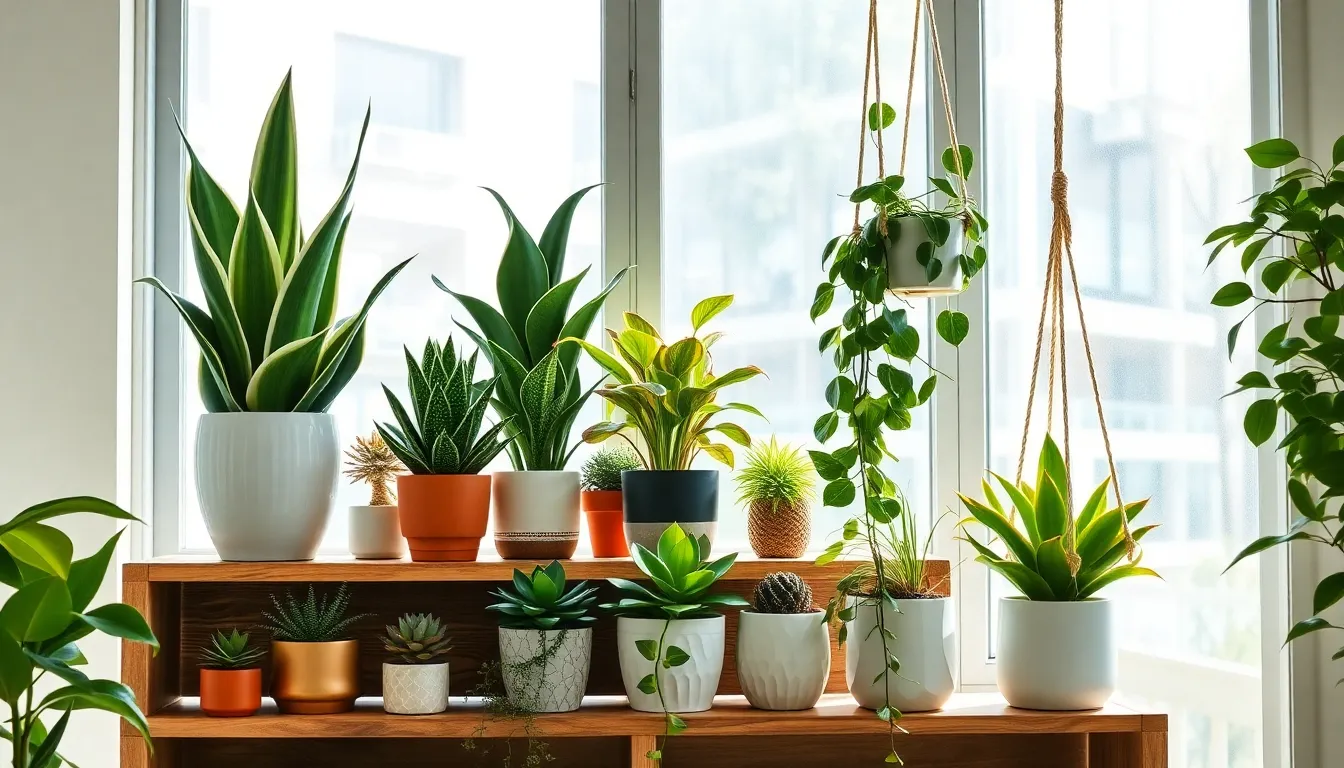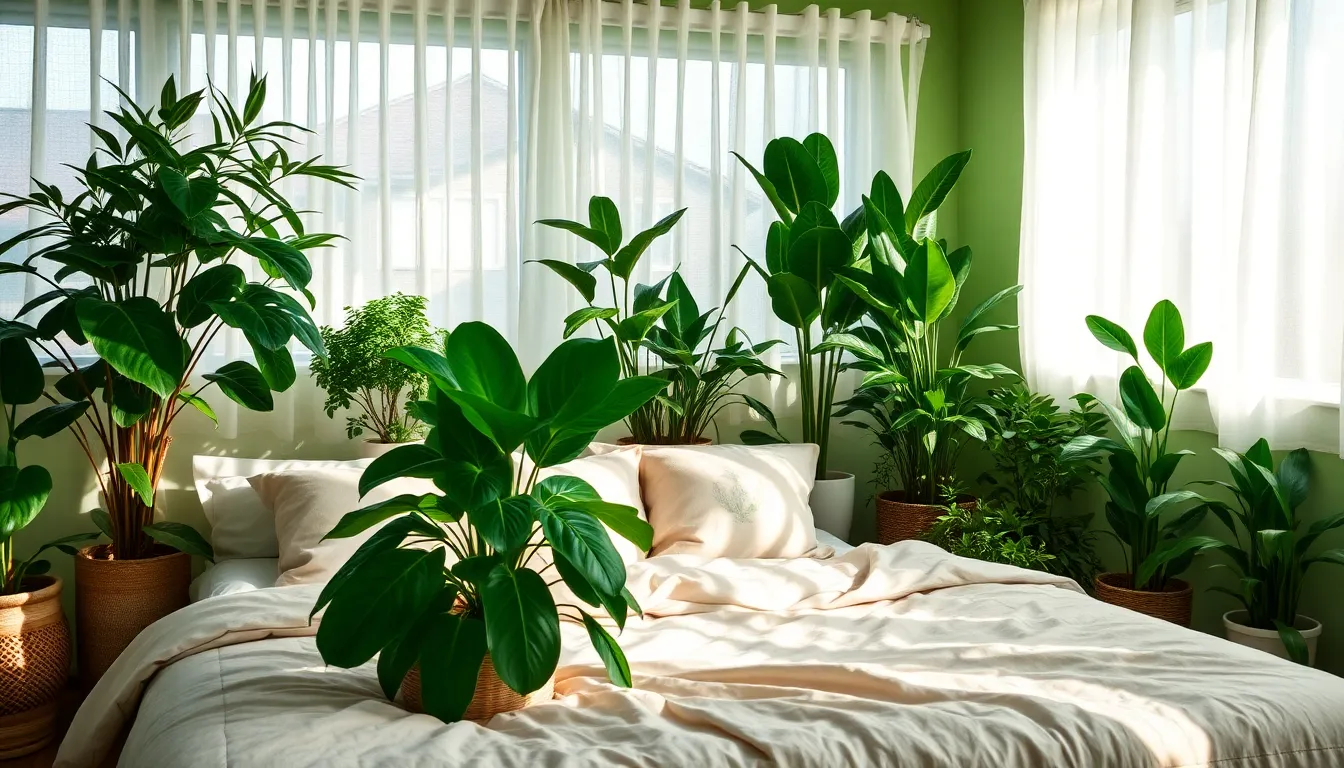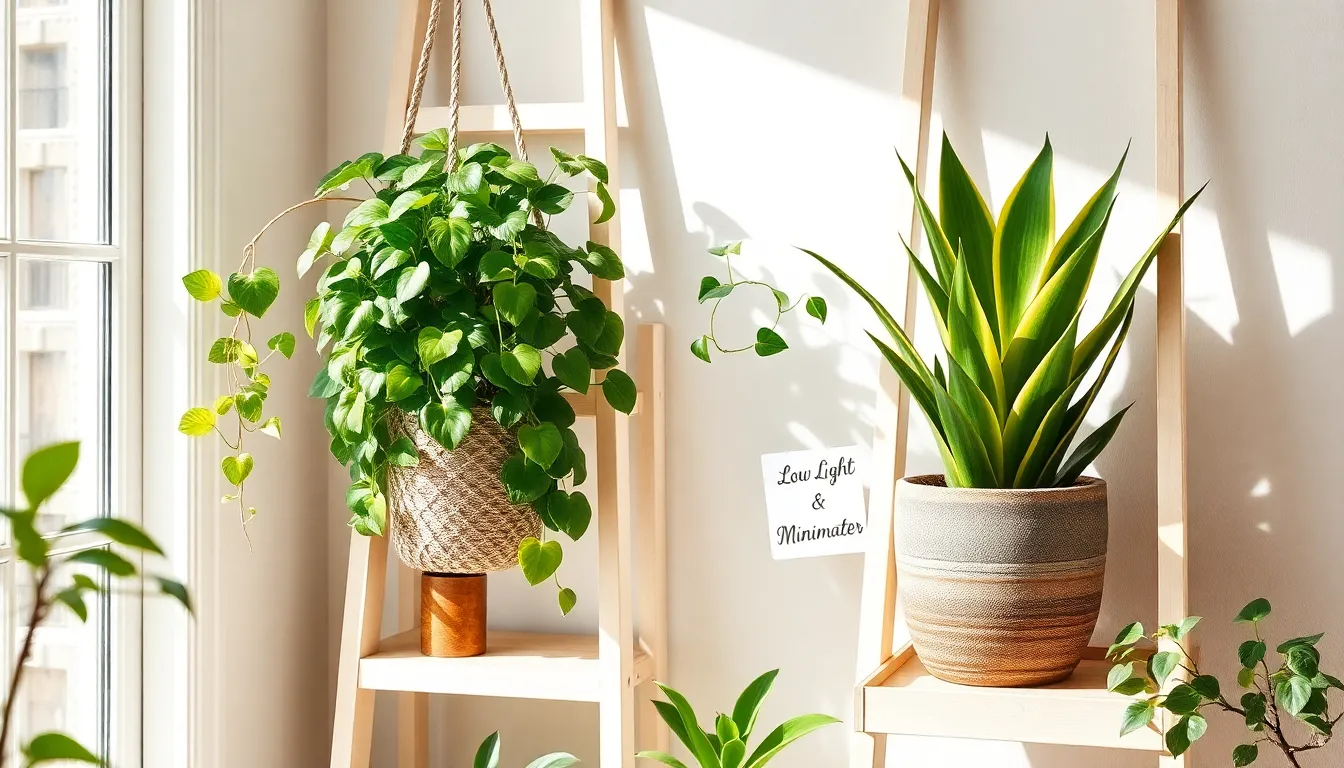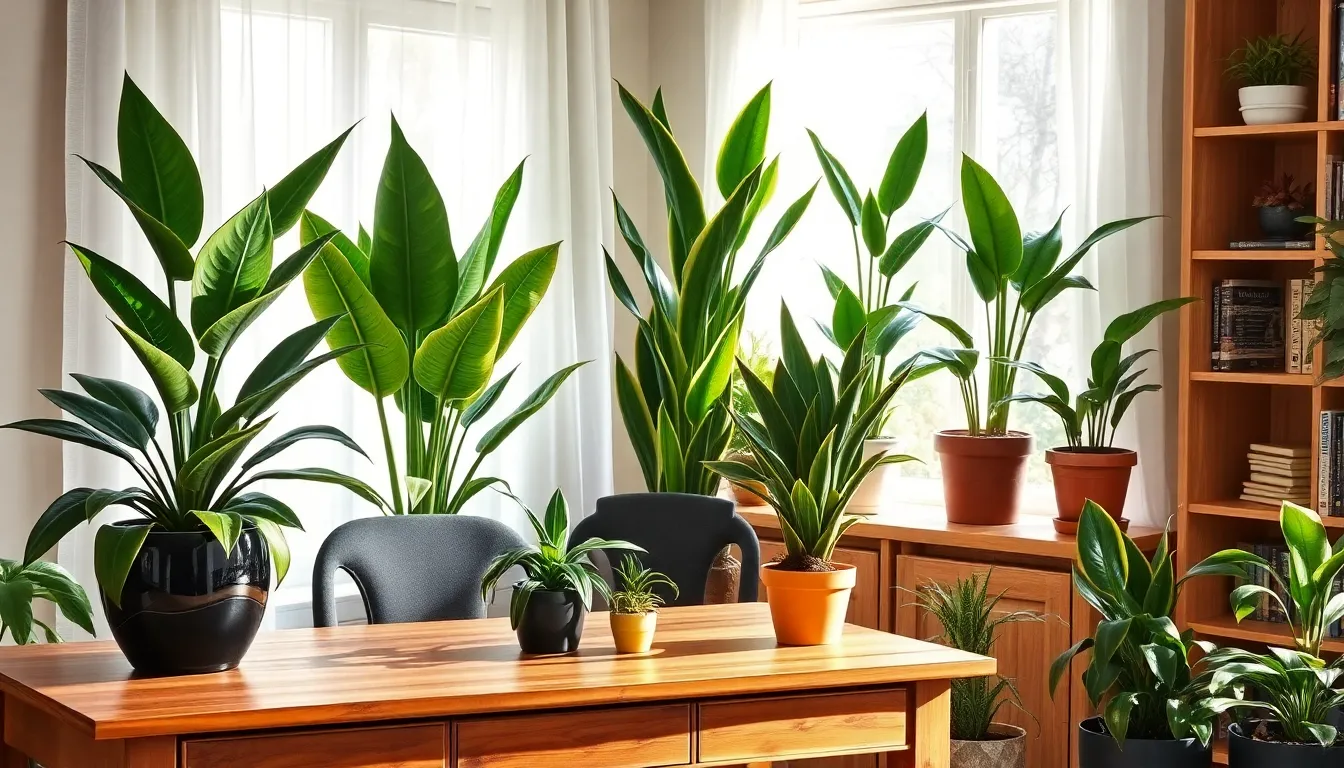Imagine transforming your home into a lush, verdant haven without the constant fuss of watering schedules and plant care anxieties. Whether you’re a seasoned gardener with a green thumb or a curious beginner just starting your indoor plant journey, our guide to the “Top 10 Indoor Plants for Low Maintenance” is here to help you cultivate a thriving indoor oasis effortlessly. These handpicked plant champions require minimal attention while offering maximum aesthetic and emotional rewards, making your indoor gardening experience both joyful and fulfilling.
Our curated list is more than just a selection of beautiful foliage; it’s a testament to the joy and ease of successful gardening. With practical insights and proven techniques, you’ll feel empowered and confident in your ability to nurture these resilient beauties. From purifying the air to boosting your mood, these plants are ready to bring vibrant life and tranquility into your home, proving that anyone can become a successful indoor gardener. Embrace the simplicity and satisfaction of low-maintenance gardening, and watch your indoor spaces come alive with nature’s wonders.
Spider Plant (Chlorophytum comosum)
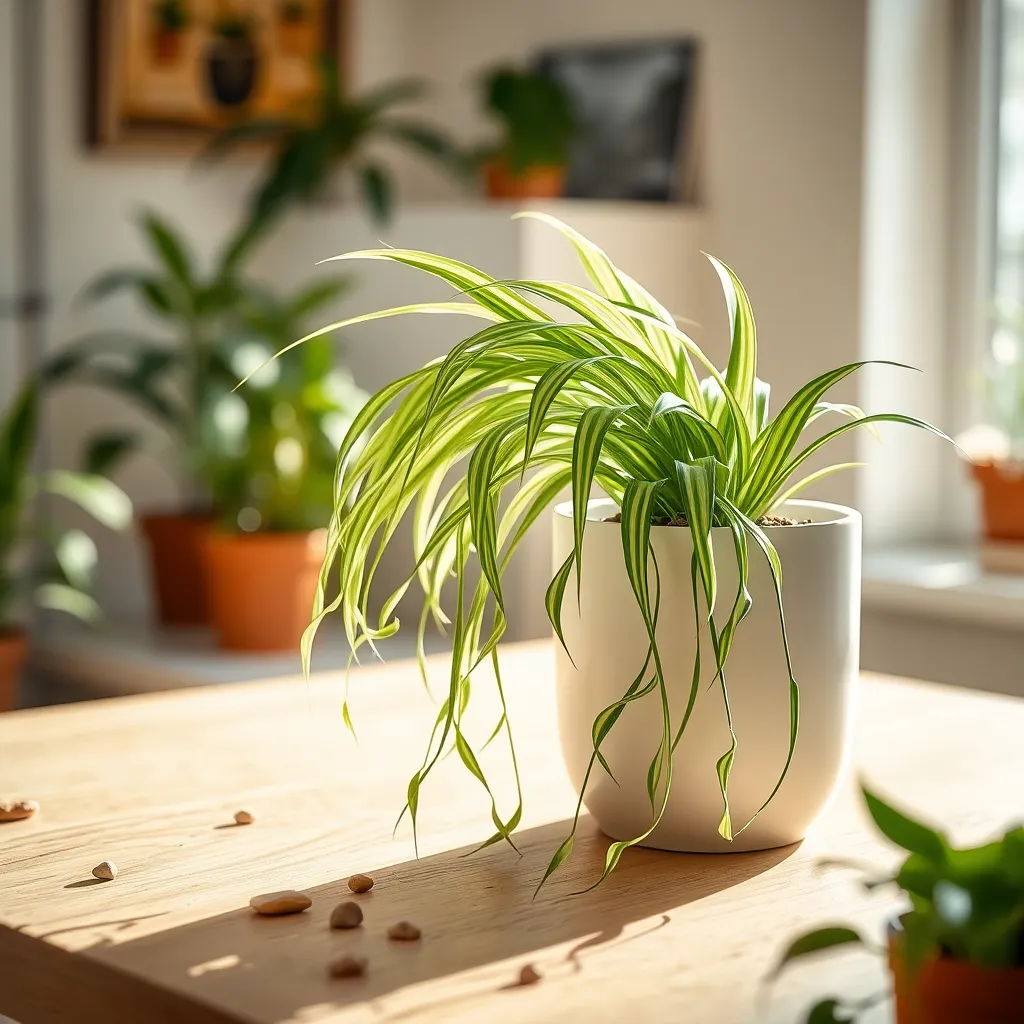
Spider plants, or Chlorophytum comosum, are celebrated for their tolerance to neglect and ability to thrive in a range of conditions. These resilient plants are ideal for beginners, as their care requirements are minimal and straightforward.
Position your spider plant in a spot that receives bright, indirect sunlight for optimal growth. While they can endure lower light levels, providing adequate light encourages the production of their characteristic “spiderettes” or baby plants.
Water your spider plant moderately, ensuring the soil dries out slightly between waterings. Overwatering can lead to root rot, so it’s crucial to use a well-draining potting mix, such as a blend of peat, pine bark, and perlite.
For those looking to encourage more vigorous growth, consider feeding your spider plant a balanced liquid fertilizer monthly during the growing season. Pruning any brown tips on the leaves will help the plant maintain a neat appearance and redirect energy to healthier parts.
Peace Lily (Spathiphyllum wallisii)
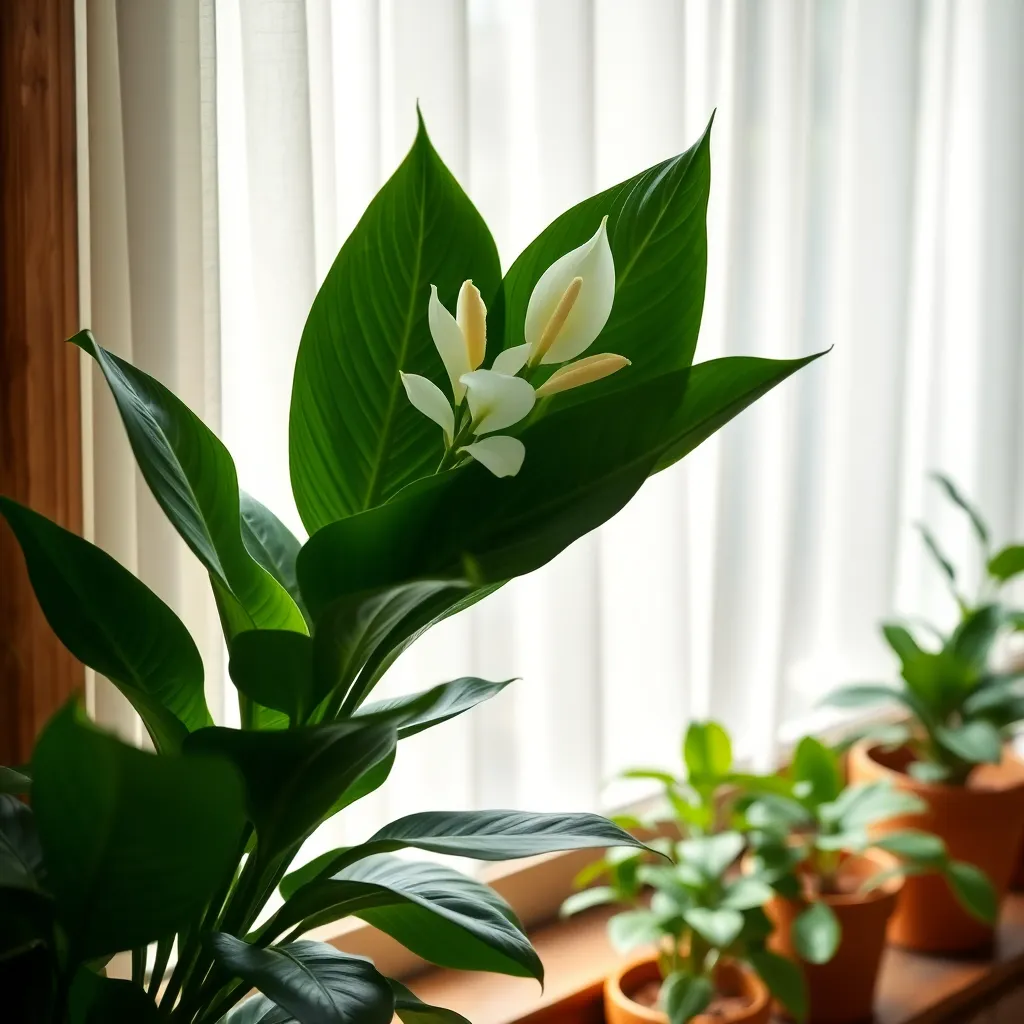
The Peace Lily (Spathiphyllum wallisii) is a fantastic choice for those seeking a low-maintenance indoor plant with stunning white blooms. Known for its air-purifying qualities, this plant can thrive in a variety of home environments, making it a popular choice for both novice and experienced gardeners.
These plants prefer indirect sunlight, so placing them near a north or east-facing window is ideal. Direct sunlight can scorch their leaves, so it’s important to ensure they are shielded from harsh rays.
Peace Lilies enjoy a consistently moist environment, but be cautious not to overwater them. Allow the top inch of soil to dry out between waterings to prevent root rot, and use a well-draining potting mix to maintain healthy roots.
To encourage blooming, keep the temperature between 65-85°F (18-29°C) and maintain a humidity level of around 50%. For advanced care, consider misting the leaves regularly or placing the pot on a tray of pebbles and water to increase humidity naturally.
Aloe Vera (Aloe barbadensis miller)
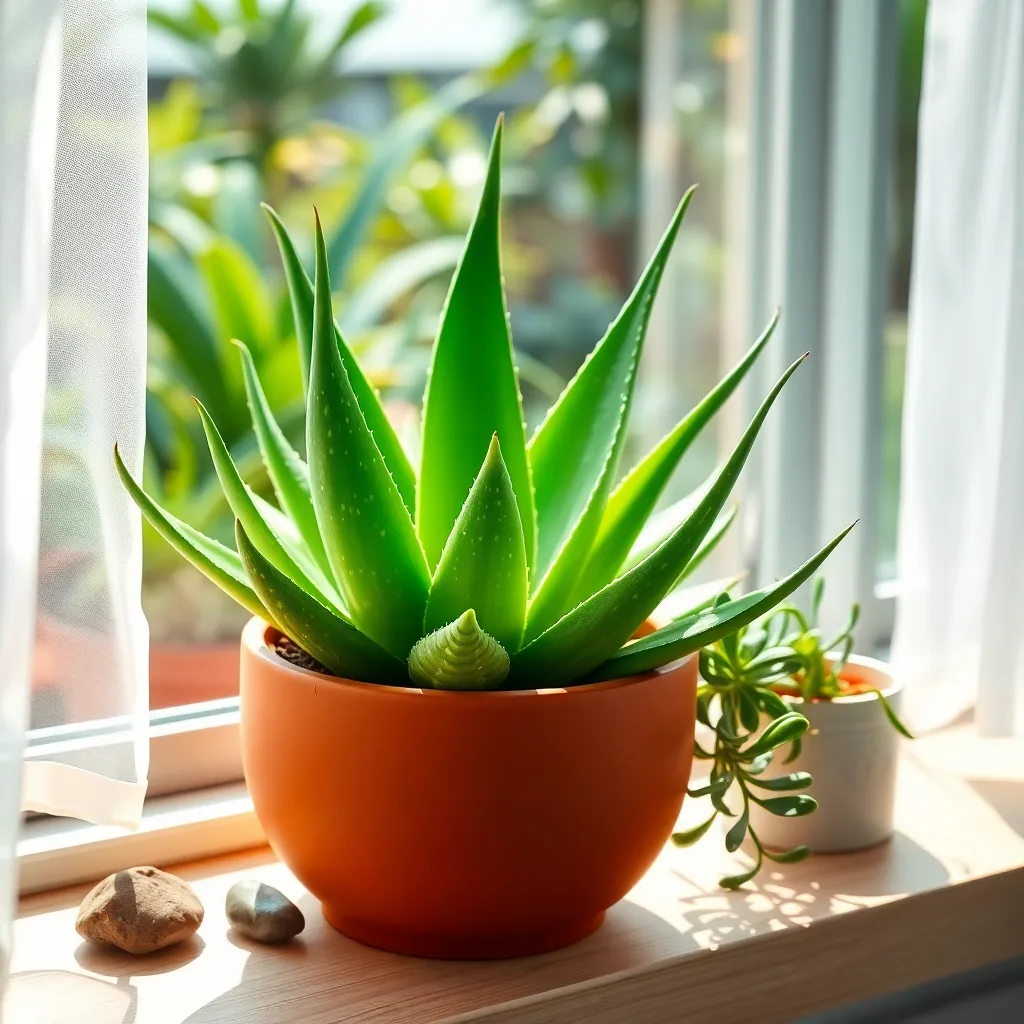
Aloe Vera, or Aloe barbadensis miller, is a succulent known for its healing properties and ease of care. This plant thrives on neglect, making it an ideal choice for those who prefer a low-maintenance indoor plant.
Position your Aloe Vera in a spot where it can receive bright, indirect sunlight. Direct sunlight can scorch the leaves, so a north or east-facing window is typically perfect.
Use a well-draining potting mix, such as a cactus or succulent blend, to prevent root rot. Ensure the pot has drainage holes to allow excess water to escape, as Aloe Vera dislikes sitting in water.
Aloe Vera requires minimal watering—typically every two to three weeks depending on the humidity of your home. Allow the soil to dry out completely between waterings to mimic its natural arid environment.
For optimal growth, fertilize your Aloe Vera with a diluted succulent fertilizer during the spring and summer months. This encourages healthy leaf production and helps the plant store nutrients for the dormant winter period.
Jade Plant (Crassula ovata)
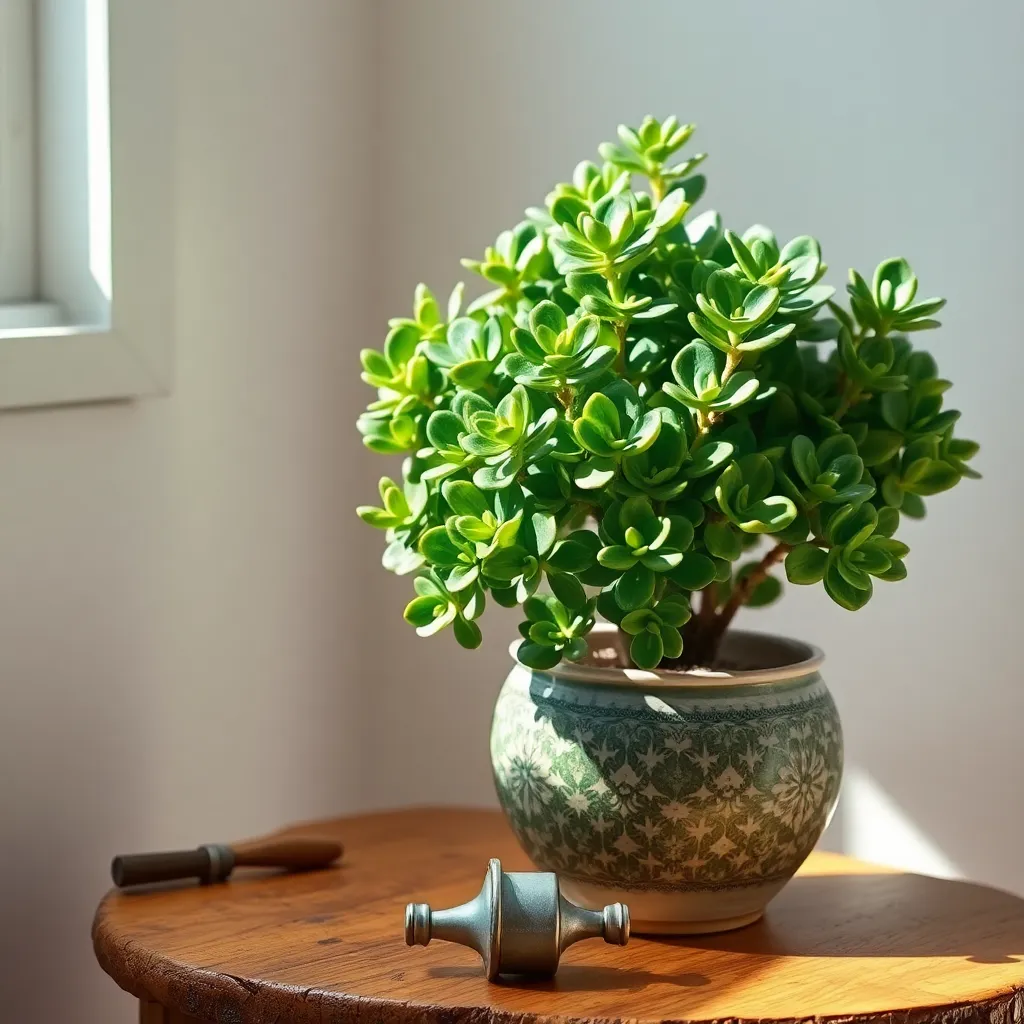
The Jade Plant, also known as Crassula ovata, is a popular choice for those seeking a low-maintenance indoor plant. With its fleshy, oval leaves and tree-like structure, it adds a touch of elegance to any room.
Thriving on neglect, the Jade Plant requires infrequent watering, making it perfect for busy individuals. Water deeply but only when the top inch of soil feels dry to the touch; overwatering can lead to root rot.
Place your Jade Plant in a spot where it can receive bright, indirect sunlight for optimal growth. If you notice it stretching, try moving it to a sunnier location to encourage compact, healthy growth.
For those looking to take their Jade Plant care to the next level, consider using a well-draining cactus or succulent soil mix. Fertilize sparingly with a balanced, water-soluble fertilizer during the growing season for best results.
Rubber Plant (Ficus elastica)
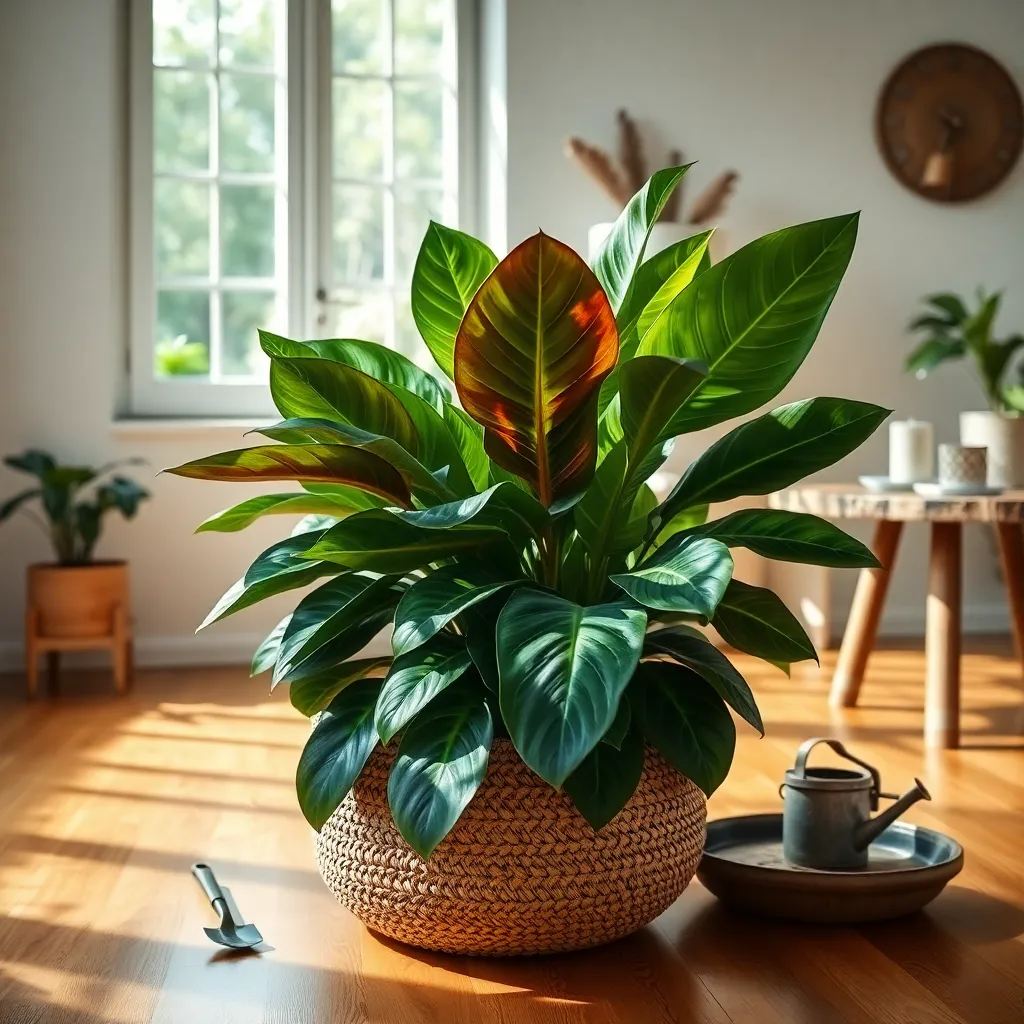
The Rubber Plant (Ficus elastica) is a fantastic low-maintenance choice for those looking to add a touch of the tropics to their home. Known for its broad, glossy leaves, this plant not only enhances decor but also purifies the air.
To ensure your Rubber Plant thrives, position it in bright, indirect light, as direct sunlight can scorch its leaves. If natural light is limited, a spot near a north-facing window or under a grow light can suffice, making it adaptable for almost any indoor environment.
When it comes to watering, the Rubber Plant prefers to dry out slightly between waterings. It’s crucial to water thoroughly, allowing the excess to drain away, and then let the top inch of soil dry out before watering again—overwatering is a common mistake.
For optimal growth, use a potting mix that promotes drainage, such as one with a blend of peat, pine bark, and perlite. Fertilizing every four to six weeks during the growing season with a balanced liquid fertilizer can enhance the plant’s vibrant foliage.
Philodendron (Philodendron hederaceum)
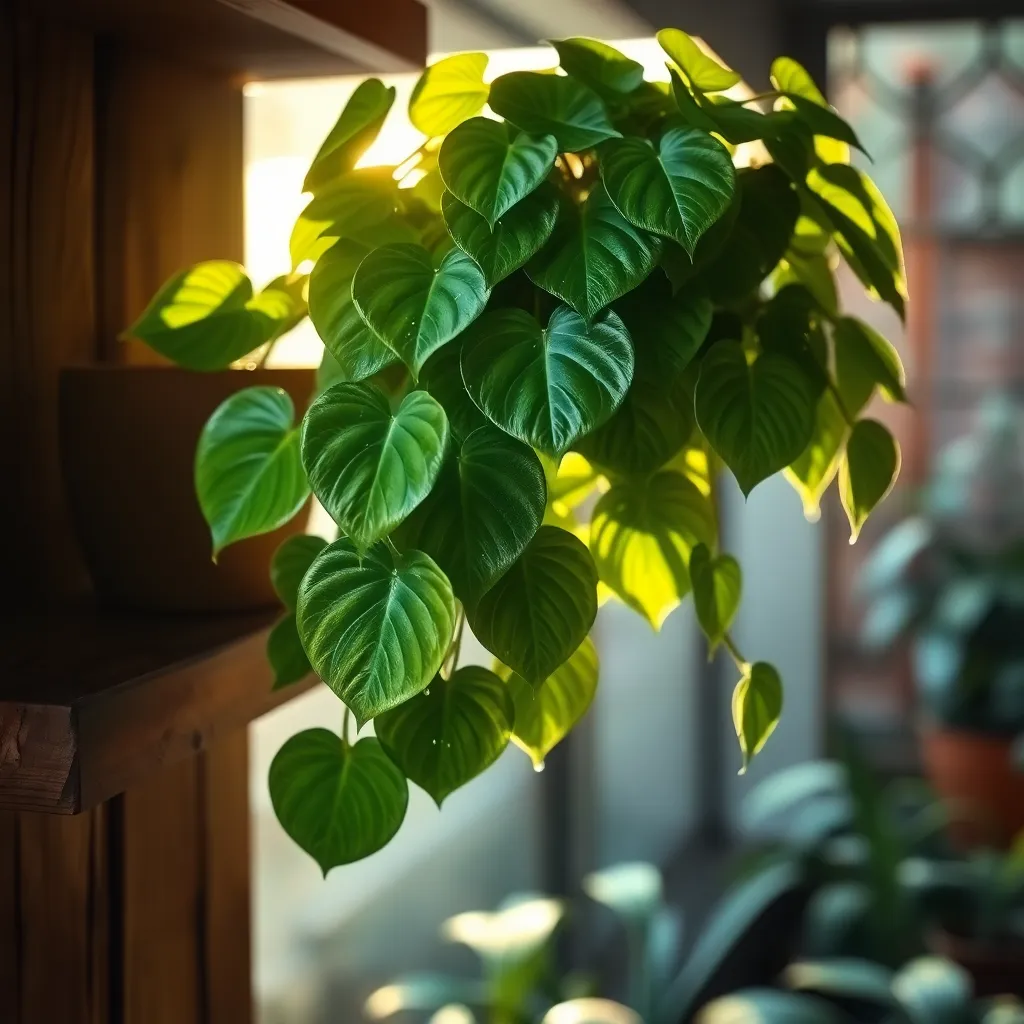
Philodendron hederaceum, commonly known as the Heartleaf Philodendron, is a classic choice for anyone seeking a low-maintenance indoor plant. Its lush, trailing vines and heart-shaped leaves make it a visually appealing addition to any home.
To ensure optimal growth, place your Philodendron in a spot with indirect sunlight, as direct sun can scorch its leaves. If natural light is limited, this plant can also thrive under fluorescent lights, making it perfect for office environments.
When it comes to watering, allow the top inch of soil to dry out between waterings to prevent overwatering, which can lead to root rot. During the growing season, you may find that watering every 1-2 weeks is sufficient, but adjust based on your home’s humidity and temperature.
For best results, use a well-draining potting mix rich in organic matter to provide the nutrients this plant needs. Additionally, consider fertilizing every 4-6 weeks during spring and summer with a balanced liquid fertilizer to encourage lush growth.
- Ensure adequate drainage by using pots with drainage holes.
- Prune regularly to encourage bushier growth and remove any yellowing leaves.
- Wipe the leaves with a damp cloth occasionally to remove dust and maintain their glossy appearance.
Cast Iron Plant (Aspidistra elatior)
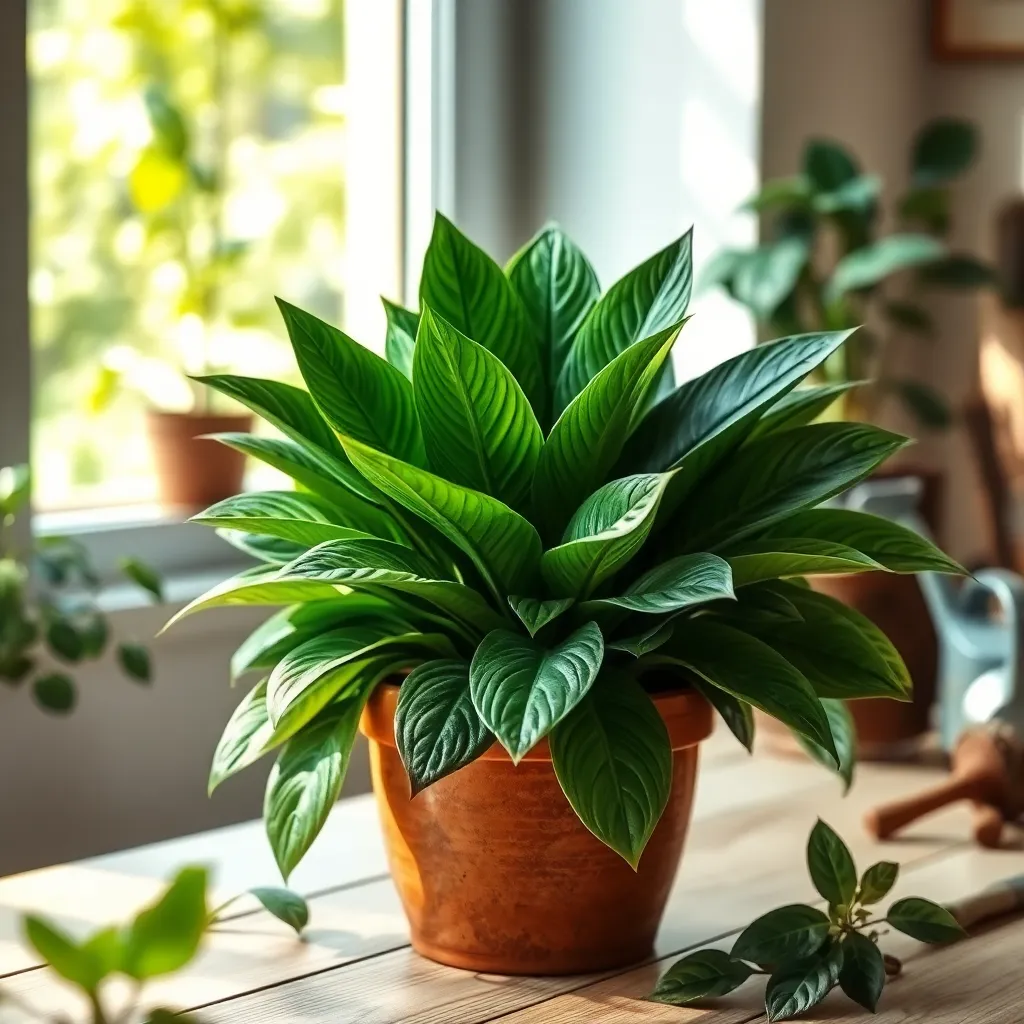
The Cast Iron Plant, or Aspidistra elatior, is renowned for its resilience and suitability for low-maintenance indoor gardening. This hardy plant thrives in a variety of lighting conditions, from low light to indirect sunlight, making it perfect for spots where other plants might struggle.
Watering is straightforward, as the Cast Iron Plant prefers to dry out between waterings. Simply check the top inch of soil and water only when it feels dry to the touch; overwatering is one of the few ways to harm this otherwise robust plant.
When it comes to soil, a well-draining potting mix is ideal to ensure the roots don’t sit in water. Consider adding a handful of perlite or coarse sand to improve drainage if the soil retains too much moisture.
Fertilizing this plant can be kept to a minimum, with a balanced liquid fertilizer applied once every few months during the growing season. For advanced care, occasionally wipe the large, glossy leaves with a damp cloth to remove dust and maintain their attractive appearance.
Chinese Evergreen (Aglaonema commutatum)
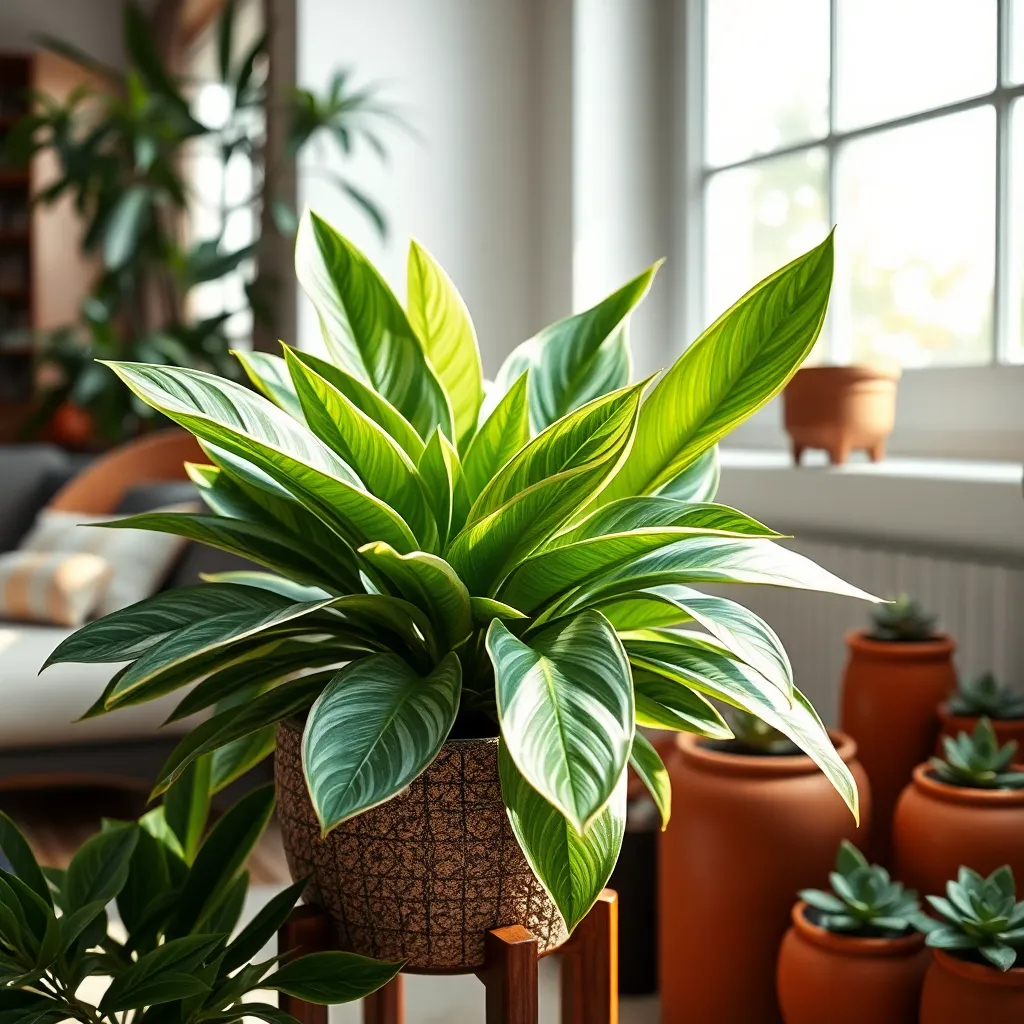
Chinese Evergreen (Aglaonema commutatum) is a classic choice for those seeking an attractive, low-maintenance indoor plant. Known for its striking leaves, which can vary from deep green to silver and even red, this plant adds a splash of color to any room.
To keep your Chinese Evergreen thriving, place it in a spot with indirect light, as direct sunlight can scorch its leaves. This plant is highly adaptable and can tolerate low-light conditions, making it suitable for various indoor environments.
Watering should be done carefully, as Aglaonema prefers slightly moist soil but can suffer from root rot if overwatered. Allow the top inch of soil to dry out between waterings, and use a pot with drainage holes to prevent water from accumulating.
For optimal growth, use a well-draining potting mix containing peat, perlite, or sand to ensure proper aeration. Fertilize your plant monthly during the growing season (spring and summer) with a balanced, water-soluble fertilizer to encourage lush foliage.
Advanced gardeners might consider propagating their Chinese Evergreen through stem cuttings or division. This not only creates new plants but also helps maintain the parent plant’s size and vigor, ensuring a flourishing indoor garden.
Bird’s Nest Fern (Asplenium nidus)
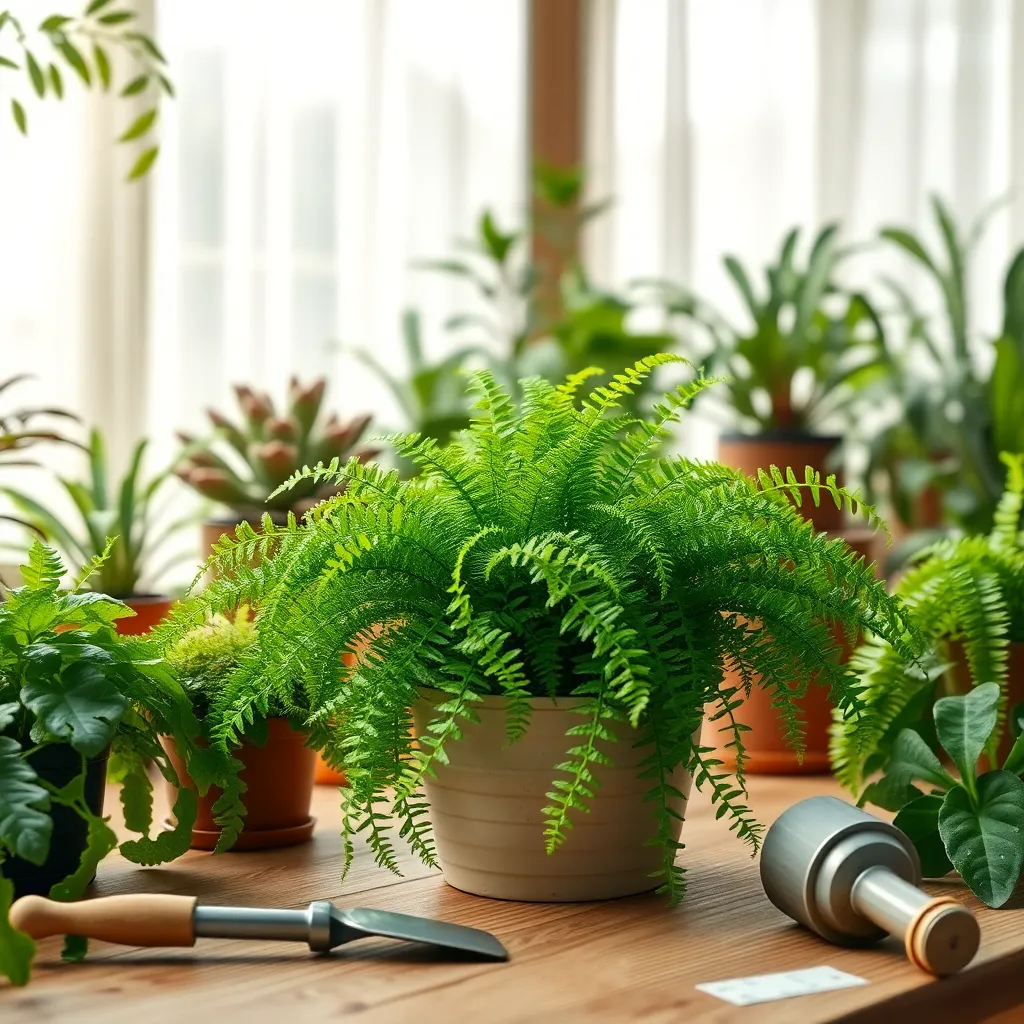
The Bird’s Nest Fern (Asplenium nidus) is an excellent choice for those seeking a low-maintenance yet striking indoor plant. It thrives in indirect light, making it perfect for rooms with limited sunlight, such as bathrooms or offices.
Begin with a well-draining potting mix that retains some moisture, as these ferns appreciate humidity. Consider using a mix of peat moss, perlite, and orchid bark to create the ideal balance for your fern.
Water your Bird’s Nest Fern when the top inch of soil feels dry to the touch, avoiding waterlogged conditions. Misting the leaves occasionally can help maintain the humidity levels they love, especially in drier climates.
For optimal growth, keep your Bird’s Nest Fern in temperatures between 60-75°F (15-24°C). Advanced gardeners might consider using a humidity tray or a small humidifier nearby to keep the environment consistently moist.
Parlor Palm (Chamaedorea elegans)
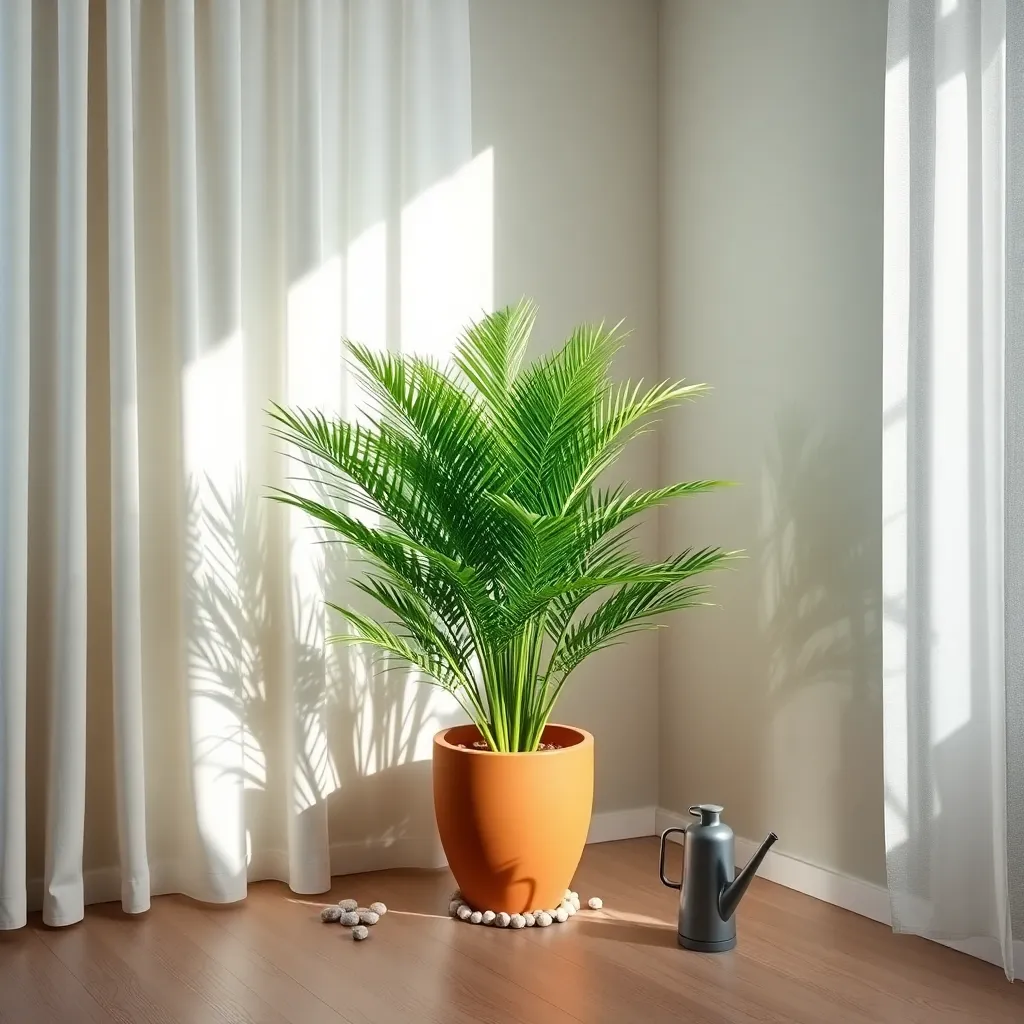
The Parlor Palm (Chamaedorea elegans) is a classic choice for those seeking a low-maintenance indoor plant. Known for its elegant fronds, it adds a touch of greenery without requiring extensive care.
This tropical plant thrives in low to medium light, making it perfect for homes with less sunlight. For optimal growth, place it near an east or north-facing window, but avoid direct sunlight, which can scorch its leaves.
Watering needs are minimal, allowing the top inch of soil to dry out between waterings. Overwatering is a common issue, so it’s best to err on the side of a little dryness, particularly in the winter months when growth slows.
For soil, use a peat-based potting mix with good drainage. While it doesn’t demand frequent repotting, check every couple of years to ensure it’s not root-bound, which can stunt growth.
Conclusion: Growing Success with These Plants
In exploring the ‘Top 10 Indoor Plants for Low Maintenance,’ we’ve delved into the art of nurturing relationships that require minimal effort yet offer maximum satisfaction. From the resilience of the Snake Plant reminding us of patience, to the peace-promoting qualities of the Peace Lily, each plant symbolizes a key relationship concept: resilience, harmony, adaptability, support, growth, communication, space, balance, patience, and commitment. These concepts are vital for cultivating relationships that thrive with ease and grace.
Now, as an actionable next step, take a moment to reflect on which of these qualities you’d like to nurture in your current relationships. Choose one plant—or concept—that resonates most with you and incorporate its essence into your daily interactions. This small yet intentional step can lead to profound improvements in how you connect with others.
Remember, relationships are like gardens—they flourish with attention and care. Bookmark this article to revisit these insights whenever you need a gentle reminder or boost of inspiration. As you journey forward, know that with understanding and effort, your relationships can bloom beautifully, enriching your life in countless ways. Let this be your guide to lasting and fulfilling connections.

